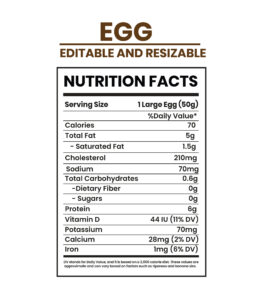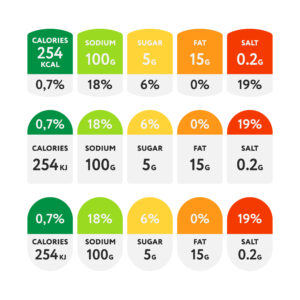 In today’s health-conscious world, providing accurate nutritional information for your recipes is essential. Whether you’re a restaurant owner, food blogger, or home cook, creating an effective nutrition fact template is crucial for transparency and customer satisfaction. Here’s a step-by-step guide to help you develop a comprehensive and accurate nutrition fact template for your recipes.
In today’s health-conscious world, providing accurate nutritional information for your recipes is essential. Whether you’re a restaurant owner, food blogger, or home cook, creating an effective nutrition fact template is crucial for transparency and customer satisfaction. Here’s a step-by-step guide to help you develop a comprehensive and accurate nutrition fact template for your recipes.
1. Understand Regulatory Requirements
Before diving into the creation process, it’s essential to understand the regulatory requirements for nutritional labeling in your country. Different regions have specific guidelines on what information must be included on a nutrition fact template. For instance, in the United States, the FDA requires labels to display:
Ensure you are familiar with the requirements relevant to your location to avoid any compliance issues.
2. Gather Accurate Nutritional Data
Accurate nutritional data is the foundation of an effective nutrition fact template. There are several ways to obtain this data:
3. Standardize Your Recipe Measurements
Consistency is key when creating a nutrition fact template. Ensure that all ingredients in your recipes are measured using standardized units (e.g., grams, ounces, cups). This standardization simplifies the calculation process and ensures accuracy.
4. Calculate Nutritional Values
Once you have gathered all the necessary data and standardized your measurements, calculate the nutritional values for your recipe. Most nutritional analysis software will handle this step for you, but if you’re doing it manually, sum up the values for each ingredient based on the serving size.
5. Design Your Nutrition Fact Template
The design of your nutrition fact template should be clear, easy to read, and compliant with regulatory guidelines. Key elements to include are:
- Header: Title your template as “Nutrition Facts.”
- Serving Information: Include serving size and servings per container.
- Nutrient List: Display the nutritional values in a standardized format. Arrange the nutrients in the order specified by regulatory guidelines.
- Footnotes: Add any necessary footnotes or additional information, such as daily value percentages based on a 2,000-calorie diet.
6. Use Professional Tools
Consider using professional tools to streamline the creation process. For instance, Menusano offers a user-friendly platform to create detailed and accurate nutrition fact templates. This tool can save you time and ensure that your templates are both professional and compliant with regulatory standards.
7. Regularly Update Your Information
Recipes can change, and so can nutritional guidelines. Regularly review and update your nutrition fact templates to ensure they remain accurate and compliant. This practice is particularly important if you alter your recipes or if there are changes in nutritional labeling regulations.
Using Nutrition Fact Templates
Creating an effective nutrition fact template for your recipes is a critical step in providing transparency and building trust with your audience. By understanding regulatory requirements, gathering accurate data, and utilizing professional tools like Menusano, you can create comprehensive and compliant nutrition fact templates. For more information and to start creating your own nutrition fact templates, visit Menusano.
By following these steps, you’ll ensure that your nutritional information is accurate, clear, and helpful to your customers, fostering trust and loyalty in your brand.

